Progress in Theoretical Modelling of Macroscopic and Microscopic Dynamics of Bolted Joints in Complex Equipment
Abstract
:1. Introduction
2. Macroscopic Friction Models for Connected Interfaces
2.1. Static Friction Model
2.1.1. Coulomb Model
2.1.2. Coulomb Viscosity Model
2.1.3. Static Friction Coulomb Viscous Friction Model
2.1.4. Stribeck Model
2.1.5. Other Models
2.2. Dynamic Friction Models
2.2.1. Dahl Model
2.2.2. Sideburns Model
2.2.3. LuGre Model
2.2.4. Leuven Model
2.2.5. Valanis Model
2.2.6. Iwan Model
3. Microscopic Friction Model for Rough Surfaces
3.1. Statistical Summation Contact Model
3.1.1. GW Model
3.1.2. CEB Model
3.1.3. KE Model
3.1.4. BKE Model
3.2. Fractal Contact Modeling
3.3. Study of Microscopic Contact Mechanism
4. Conclusions and Future Directions
- The Iwan model is still the focus of research, especially regarding the yield force density function from the bolt contact mechanism, the addition of a normal load, based on the change in contact area and dynamic pressure for the dynamic Iwan model. Their models can better characterise the evolution of the contact state, reflecting the dynamic degradation characteristics, residual stiffness. However, the contact area function and dynamic pressure change function still need to be corrected at special points.
- A complete set of parameter identification methods should be established. Even if the dynamic model of bolted structures can accurately characterise the dynamic properties, the difficulty in parameter identification will lead to difficulties in model application.
- The problems of the cross-scale and non-linearity of bolted structures should be solved. Simple dynamic models of bolted structures can no longer meet the current needs, and the problems of cross-scale and non-linearity seriously affect the life of bolts. At present, it is necessary to carry out research on this aspect.
- After the dynamic model of the bolted structure is established, it is usually transformed into an equivalent model through finite element for stress–strain calculation. In recent years, the mechanical model has been further developed. However, various assumptions in the kinetic model lead to a large deviation between the theory and reality, and there are non-uniform micro-convex bodies on the microscopic surface of the connection structure, which greatly affects the accuracy of the mechanical prediction. Wang Biao of Sun Yat-sen University addressed the above problems [111], and from the thermodynamic point of view, through the introduction of elastic and dissipative energies, the material structure was equated to a thermodynamic system, and a mechanical computational prediction that can be made under complex loading conditions. Additionally, the deformation of complex structures was established [112,113], which achieves an accurate prediction of the strength of the material failure and deformation of the material localisation. This method has proved the correctness of the method through a variety of experiments. However, how to apply this method in engineering practice still needs to be studied.
Author Contributions
Funding
Data Availability Statement
Conflicts of Interest
References
- Lu, X.; Zhu, M.; Liu, Y.; Wang, S.; Xu, Z.; Li, S. Triangular Position Multi-Bolt Layout Structure Optimization. Appl. Sci. 2023, 13, 8786. [Google Scholar] [CrossRef]
- Liu, L. Research on Remaining Life Prediction and Remanufacturability Assessment of Retired Machine Tool Spindles. Ph.D. Thesis, Northwestern Polytechnical University, Xi’an, China, 2019. [Google Scholar]
- Guo, F.; Bi, Y.; Zhou, G. Numerical simulation of the reduction of plate friction resistance using microbubbles. Numerical simulation of flat plate frictional resistance reduction using microbubbles. J. Nav. Eng. Univ. 2008, 20, 5. [Google Scholar]
- Persson, B.N.T. History of Tribology. In Encyclopedia of Lubricants and Lubrication; Mang, T., Ed.; Springer: Berlin/Heidelberg, Germany, 2014; pp. 791–797. [Google Scholar]
- Popov, V.L. Contact Mechanics and Friction Physical Principles and Applications; Tsinghua University Press: Beijing, China, 2016. [Google Scholar]
- Jost, H. Lubrication (Tribology) Education and Research; A Report on the Present Position and Industry’s Needs; Department of Education and Science, Her Majesty’s Stationary Office: London, UK, 1966. [Google Scholar]
- Huang, P. Tutorial on Tribology; Higher Education Press: Beijing, China, 2008. [Google Scholar]
- Epiphaniou, N. Modelling of Dynamic Friction across Solid Material Interfaces Using Molecular Dynamics Techniques. Ph.D. Thesis, Cranfield University, Bedford, UK, 2010. [Google Scholar]
- Tomlinson, G.A.C.V.I. A molecular theory of friction. Lond. Edinb. Dublin Philos. Mag. J. Sci. 1929, 7, 905–939. [Google Scholar] [CrossRef]
- Kragelsky, I.V.; Dobychin, M.N.; Kombalov, V.S. Friction and Wear: Calculation Methods; Elsevier: Amsterdam, The Netherlands, 2013. [Google Scholar]
- Bowden, F.P. The Friction and Lubrication of Solids. Am. J. Phys. 1951, 19, 428. [Google Scholar] [CrossRef]
- Bhushan, B.; Israelachvili, J.N.; Landman, U. Nanotribology: Friction, wear and lubrication at the atomic scale. Nature 1995, 374, 607–616. [Google Scholar] [CrossRef]
- Zou, K.; Li, Z.; Leng, Y.; Chen, J.; Hu, Y.; Wang, H.; Wen, S. Surface force meter and its application in surface contact study. Sci. Bull. 1999, 44, 992–995. [Google Scholar] [CrossRef]
- Wen, S. Advances in Nano Tribology Research. J. Mech. Eng. 2007, 43, 8. [Google Scholar]
- Granick, S.; Demirel, A.L.; Cai, L.L.; Peanasky, J. Soft Matter in a Tight Spot: Nanorheology of Confined Liquids and Block Copolymers. Isr. J. Chem. 2013, 35, 75–84. [Google Scholar] [CrossRef]
- Zou, K.; Hu, Y.; Wen, S. Surface Force Apparatus (SFA) and its application to molecular tribology. In Advances in Nano Tribology; Tsinghua University: Beijing, China, 1995; pp. 55–61. [Google Scholar]
- Homola, A.M.; Israelachvili, J.N.; McGuiggan, P.M.; Gee, M.L. Fundamental experimental studies in tribology: The transition from “interfacial” friction of undamaged molecularly smooth surfaces to “normal” friction with wear. Wear 1990, 136, 65–83. [Google Scholar] [CrossRef]
- Homola, A.; Israelachvili, J.; Gee, M.; McGuiggan, P. Measurements of and Relation between the Adhesion and Friction of Two Surfaces Separated by Molecularly Thin Liquid Films. J. Tribol. 1989, 111, 675–682. [Google Scholar] [CrossRef]
- Tabor, D. Tribology—The last 25 years A personal view. Tribol. Int. 1995, 28, 7–10. [Google Scholar] [CrossRef]
- Ding, Q.; Zhai, H. Advances in friction dynamics of mechanical systems. Prog. Mech. 2013, 43, 112–131. [Google Scholar]
- Gaul, L.; Nitsche, R. The Role of Friction in Mechanical Joints. Appl. Mech. Rev. 2001, 54, 93–106. [Google Scholar] [CrossRef]
- Oden, J.; Martins, J. Models and computational methods for dynamic friction phenomena. Comput. Methods Appl. Mech. Eng. 1985, 52, 527–634. [Google Scholar] [CrossRef]
- Zhang, X. Structural Nonlinear Dynamics of Friction Connections. Ph.D. Thesis, Harbin Institute of Technology, Harbin, China, 2013. [Google Scholar]
- Segalman, D.J. An Initial Overview of Iwan Modeling for Mechanical Joints; Sandia National Lab. (SNL-NM): Albuquerque, NM, USA, 2001. [Google Scholar]
- Armstrong-Hélouvry, B. Control of Machines with Friction. J. Tribol. 1992. [Google Scholar] [CrossRef]
- Janiec, M. Friction Compensation by the Use of Friction Observer. Master’s Thesis, Lund Institute of Technology, Lund, Sweden, 2004. [Google Scholar]
- Zhu, J. Research progress of friction modeling in mechanical systems. Jifu Times 2016, 262–266. [Google Scholar]
- Morin, A.J. New friction experiments carried out at Metz in 1831–1833. Proc. Fr. R. Acad. Sci. 1833, 4, 128. [Google Scholar]
- Bo, L.C.; Pavelescu, D. The friction-speed relation and its influence on the critical velocity of stick-slip motion. Wear 1982, 82, 277–289. [Google Scholar]
- Karnopp, D. Computer Simulation of Stick-Slip Friction in Mechanical Dynamic Systems. Trans. ASME J. Dyn. Syst. Meas. Control 1985, 107, 100–103. [Google Scholar] [CrossRef]
- Iurian, C.; Ikhouane, F.; Rodellar Benedé, J.; Griñó Cubero, R. Identification of a System with Dry Friction; Universitat Politecnicade Catalunya: Barcelona, Spain, 2005. [Google Scholar]
- Ravanbod-Shirazi, L.; Besançon-Voda, A. Friction identification using the Karnopp model, applied to an electropneumatic actuator. Proc. Inst. Mech. Eng. Part I J. Syst. Control Eng. 2003, 217, 123–138. [Google Scholar] [CrossRef]
- Armstrong-Hélouvry, B.; Dupont, P.; De Wit, C.C. A survey of models, analysis tools and compensation methods for the control of machines with friction. Automatica 1994, 30, 1083–1138. [Google Scholar] [CrossRef]
- Buczkowski, R.; Kleiber, M. Statistical models of rough surfaces for finite element 3D-contact analysis. Arch. Comput. Methods Eng. 2009, 16, 399–424. [Google Scholar] [CrossRef]
- Yang, G.; Xiong, M.; Hong, J.; Liu, H.; Wang, F. Digital representation and contact characteristics analysis of 3D rough surfaces. J. Xi’an Jiaotong Univ. 2012, 46, 6. [Google Scholar]
- Wu, S.; Feng, Y.; Wu, K.; Shi, X.; Wang, C.; Wang, W. Construction and simulation analysis of a three-dimensional rough surface electrical contact model based on finite element analysis. J. Hefei Univ. Technol. Nat. Sci. Ed. 2018, 41, 1441–1445. [Google Scholar]
- Wei, B.; Sun, K.; Wang, Y.; Fang, L.; Chen, C. Research on finite element simulation calculation of high-speed dry sliding friction coefficient. J. Xi’an Jiaotong Univ. 2020, 54, 82–89. [Google Scholar]
- Wu, W.; Lu, Y. Simulation research on normal contact stiffness of rough surface in turning. China Test 2021, 47, 163–168. [Google Scholar]
- Dahl, P. Solid friction damping of spacecraft oscillations. In Proceedings of the Guidance and Control Conference, Boston, MA, USA, 20–22 August 1975. [Google Scholar]
- Dahl, P.R. Solid friction damping of mechanical vibrations. AIAA J. 1976, 14, 1675–1682. [Google Scholar] [CrossRef]
- Haessig, D.A., Jr.; Friedland, B. On the Modeling and Simulation of Friction. J. Dyn. Syst. Meas. Control 1991, 113, 354–362. [Google Scholar] [CrossRef]
- de Wit, C.C.; Olsson, H.; Astrom, K.J.; Lischinsky, P. A new model for control of systems with friction. IEEE Trans. Autom. Control 1995, 40, 419–425. [Google Scholar] [CrossRef]
- Cohn, S. Dynamic Friction Measurement, Modeling, and Compensation for Precise Motion Control. Master’s Thesis, New Jersey Institute of Technology, Department of Mechanical Engineering, Newark, NJ, USA, 1998. [Google Scholar]
- Barahanov, N.; Ortega, R. Necessary and sufficient conditions for passivity of the LuGre friction model. IEEE Trans. Autom. Control 2000, 45, 830–832. [Google Scholar] [CrossRef]
- Hanss, M.; Oexl, S.; Gaul, L. Identification of a bolted-joint model with fuzzy parameters loaded normal to the contact interface. Mech. Res. Commun. 2002, 29, 177–187. [Google Scholar] [CrossRef]
- Lenz, J.; Gaul, L. The influence of microslip on the dynamic behavior of bolted joints. In Proceedings-SPIE the International Society for Optical Engineering; SPIE International Society for Optical: Bellingham, WA, USA, 1995; p. 248. [Google Scholar]
- Swevers, J.; Al-Bender, F.; Ganseman, C.G.; Projogo, T. An integrated friction model structure with improved presliding behavior for accurate friction compensation. IEEE Trans. Autom. Control 2000, 45, 675–686. [Google Scholar] [CrossRef]
- Lampaert, V.; Swevers, J.; Al-Bender, F. Modification of the Leuven integrated friction model structure. IEEE Trans. Autom. Control 2002, 47, 683–687. [Google Scholar] [CrossRef]
- Abad, J.; Medel, F.; Franco, J.M. Determination of Valanis model parameters in a bolted lap joint: Experimental and numerical analyses of frictional dissipation. Int. J. Mech. Sci. 2014, 89, 289–298. [Google Scholar] [CrossRef]
- Jalali, H.; Ahmadian, H.; Pourahmadian, F. Identification of micro-vibro-impacts at boundary condition of a nonlinear beam. Mech. Syst. Signal Process. 2011, 25, 1073–1085. [Google Scholar] [CrossRef]
- Valanis, K.C. Fundamental Consequences of a New Intrinsic Time Measure: Plasticity as a Limit of the Endochronic Theory. Arch. Mech. 1980, 32–68. [Google Scholar]
- Chu, Y. Modeling and Identification of Nonlinear Bolted Joint Structures. Master’s Thesis, Nanjing University of Aeronautics and Astronautics, Nanjing, China, 2017. [Google Scholar]
- Iwan, W.D. A Distributed-Element Model for Hysteresis and Its Steady-State Dynamic Response. J. Appl. Mech. 1966, 33, 893–900. [Google Scholar] [CrossRef]
- Ramberg, W.; Osgood, W.R. Description of Stress-Strain Curves by Three Parameters; Technical Note; National Advisory Committee for Aeronautics: Boston, MA, USA, 1943. [Google Scholar]
- Wentzel, H. Modelling of Frictional Joints in Dynamically Loaded Structrues: A Review; KTH Solid Mechanics, Royal Institute of Technology: Stockholm, Sweden, 2006. [Google Scholar]
- Segalman, D.J.; Starr, M.J. Relationships among Certain Joint Constitutive Models; Sandia National Laboratories: Albuquerque, NM, USA, 2004. [Google Scholar]
- Song, Y.; Hartwigsen, C.; McFarland, D.; Vakakis, A.F.; Bergman, L. Simulation of dynamics of beam structures with bolted joints using adjusted Iwan beam elements. J. Sound. Vib. 2004, 273, 249–276. [Google Scholar] [CrossRef]
- Rajaei, M.; Ahmadian, H. Development of generalized Iwan model to simulate frictional contacts with variable normal loads. Appl. Math. Model. 2014, 38, 4006–4018. [Google Scholar] [CrossRef]
- Segalman, D.J. A Four-Parameter Iwan Model for Lap-Type Joints. J. Appl. Mech. 2005, 72, 752–760. [Google Scholar] [CrossRef]
- Li, Y.; Hao, Z. A six-parameter Iwan model and its application. Mech. Syst. Signal Process. 2016, 68, 354–365. [Google Scholar] [CrossRef]
- Li, D.; Botto, D.; Xu, C.; Gola, M. A new approach for the determination of the Iwan density function in modeling friction contact. Int. J. Mech. Sci. 2020, 180, 105671. [Google Scholar] [CrossRef]
- Wang, S.; Zhu, M.; Cao, H.; Xie, X.; Li, B.; Guo, M.; Li, H.; Xu, Z.; Tian, J.; Ma, D. Contact Pressure Distribution and Pressure Correction Methods of Bolted Joints under Mixed-Mode Loading. Coatings 2022, 12, 1516. [Google Scholar] [CrossRef]
- Wang, S.-A.; Zhu, M.; Xie, X.; Li, B.; Liang, T.-X.; Shao, Z.-Q.; Liu, Y.-L. Finite Element Analysis of Elastoplastic Elements in the Iwan Model of Bolted Joints. Materials 2022, 15, 5817. [Google Scholar] [CrossRef] [PubMed]
- Wang, S.; Zhu, M.; Xu, Z.; Wu, F.; Li, B.; Shao, Z.; Cao, H. A stiffness degradation model of bolted joint based on fourth polynomial pressure distribution. AIP Adv. 2021, 11. [Google Scholar] [CrossRef]
- Liu, B.; Dong, X.; Peng, Z. Nonlinear equivalent modeling of bolted joints based on the Iwan model. Noise Vib. Control 2020, 40, 7–12. [Google Scholar]
- Zhu, M.; Miao, H.; Li, B. Nonlinear contact modeling and parameter identification of bolts based on Iwan model. Sci. Technol. Eng. 2022, 22, 14729–14735. [Google Scholar]
- Al-Bender, F.; Lampaert, V.; Swevers, J. Modeling of dry sliding friction dynamics: From heuristic models to physically motivated models and back. Chaos Interdiscip. J. Nonlinear Sci. 2004, 14, 446–460. [Google Scholar] [CrossRef] [PubMed]
- Al-Bender, F.; Lampaert, V.; Swevers, J. A novel generic model at asperity level for dry friction force dynamics. Tribol. Lett. 2004, 16, 81–93. [Google Scholar] [CrossRef]
- Hess, D.; Soom, A. Friction at a Lubricated Line Contact Operating at Oscillating Sliding Velocities. J. Tribol. 1990, 112, 147–152. [Google Scholar] [CrossRef]
- Armstrong-Helouvry, B. Stick slip and control in low-speed motion. IEEE Trans. Autom. Control 1993, 38, 1483–1496. [Google Scholar] [CrossRef]
- Iwan, W.D. On a Class of Models for the Yielding Behavior of Continuous and Composite Systems. J. Appl. Mech. 1967, 34, 612–617. [Google Scholar] [CrossRef]
- Bliman, P.-A.; Sorine, M. Easy-to-use realistic dry friction models for automatic control. In Proceedings of the 3rd European Control Conference, Rome, Italy, 5–8 September 1995. [Google Scholar]
- Bouc, R. Forced vibrations of mechanical systems with hysteresis. In Proceedings of the Fourth Conference on Nonlinear Oscillations, Prague, Czech Republic, 5–9 September 1967. [Google Scholar]
- Wen, Y. Methods of Random Vibration for Inelastic Structures. Appl. Mech. Rev. 1989, 42, 39–52. [Google Scholar] [CrossRef]
- Menq, C.H.; Griffin, J.H. A Comparison of Transient and Steady State Finite Element Analyses of the Forced Response of a Frictionally Damped Beam. J. Vib. Acoust. 1985, 107, 19–25. [Google Scholar] [CrossRef]
- Menq, C.-H.; Griffin, J.; Bielak, J. The influence of microslip on vibratory response, part II: A comparison with experimental results. J. Sound. Vib. 1986, 107, 295–307. [Google Scholar] [CrossRef]
- Menq, C.H.; Bielak, J.; Griffin, J.H. The influence of microslip on vibratory response, part I: A new microslip model. J. Sound. Vib. 1986, 107, 279–293. [Google Scholar] [CrossRef]
- Müller, C.; Müser, M.H.; Carbone, G.; Menga, N. Significance of Elastic Coupling for Stresses and Leakage in Frictional Contacts. Phys. Rev. Lett. 2023, 131, 156201. [Google Scholar] [CrossRef] [PubMed]
- Menga, N.; Carbone, G.; Dini, D. Exploring the effect of geometric coupling on friction and energy dissipation in rough contacts of elastic and viscoelastic coatings. J. Mech. Phys. Solids 2021, 148, 104273. [Google Scholar] [CrossRef]
- Menga, N.; Afferrante, L.; Demelio, G.; Carbone, G. Rough contact of sliding viscoelastic layers: Numerical calculations and theoretical predictions. Tribol. Int. 2018, 122, 67–75. [Google Scholar] [CrossRef]
- Menga, N.; Carbone, G.; Dini, D. Do uniform tangential interfacial stresses enhance adhesion? J. Mech. Phys. Solids 2018, 112, 145–156. [Google Scholar] [CrossRef]
- Menga, N. Rough frictional contact of elastic thin layers: The effect of geometrical coupling. Int. J. Solids Struct. 2019, 164, 212–220. [Google Scholar] [CrossRef]
- Greenwood, J.A.; Williamson, J.B.P. Contact of nominally flat surfaces. Proc. R. Soc. Lond. A 1966, 295, 300–319. [Google Scholar]
- Chang, W.-R.; Etsion, I.; Bogy, D. An Elastic-Plastic Model for the Contact of Rough Surfaces. J. Tribol. Trans. ASME 1987, 257–263. [Google Scholar] [CrossRef]
- Kogut, L.; Etsion, I. Elastic-plastic contact analysis of a sphere and a rigid flat. J. Appl. Mech. 2002, 69, 657–662. [Google Scholar] [CrossRef]
- Kogut, L.; Etsion, I. A semi-analytical solution for the sliding inception of a spherical contact. J. Trib. 2003, 125, 499–506. [Google Scholar] [CrossRef]
- Kogut, L.; Etsion, I. A static friction model for elastic-plastic contacting rough surfaces. J. Trib. 2004, 126, 34–40. [Google Scholar] [CrossRef]
- Brizmer, V.; Kligerman, Y.; Etsion, I. A model for junction growth of a spherical contact under full stick condition. J. Tribol. 2007, 129, 783–790. [Google Scholar] [CrossRef]
- Brizmer, V.; Kligerman, Y.; Etsion, I. Elastic–plastic spherical contact under combined normal and tangential loading in full stick. Tribol. Lett. 2007, 25, 61–70. [Google Scholar] [CrossRef]
- Cohen, D.; Kligerman, Y.; Etsion, I. A model for contact and static friction of nominally flat rough surfaces under full stick contact condition. J. Tribol. 2008, 130, 031401. [Google Scholar] [CrossRef]
- Cohen, D.; Kligerman, Y.; Etsion, I. The effect of surface roughness on static friction and junction growth of an elastic-plastic spherical contact. J. Tribol. 2009, 131, 021404. [Google Scholar] [CrossRef]
- Greenwood, J.A.; Tripp, J.H. The Elastic Contact of Rough Spheres. J. Appl. Mech. 1967, 34, 153–159. [Google Scholar] [CrossRef]
- Greenwood, J.A.; Tripp, J. The contact of two nominally flat rough surfaces. Proc. Inst. Mech. Eng. 1970, 185, 625–633. [Google Scholar] [CrossRef]
- Whitehouse, D.J.; Archard, J. The properties of random surfaces of significance in their contact. Proc. R. Soc. Lond. A Math. Phys. Sci. 1970, 316, 97–121. [Google Scholar]
- Jackson, R.L.; Green, I. A Finite Element Study of Elasto-Plastic Hemispherical Contact Against a Rigid Flat. J. Tribol. 2005, 127, 343–354. [Google Scholar] [CrossRef]
- Nayak, P.R. Random Process Model of Rough Surfaces. J. Tribol. 1971, 93, 398–407. [Google Scholar] [CrossRef]
- Nayak, P.R. Random process model of rough surfaces in plastic contact. Wear 1973, 26, 305–333. [Google Scholar] [CrossRef]
- Zhao, Y.; Maietta, D.M.; Chang, L. An asperity microcontact model incorporating the transition from elastic deformation to fully plastic flow. J. Tribol. 2000, 122, 86–93. [Google Scholar] [CrossRef]
- Mandelbrot, B. How long is the coast of Britain? Statistical self-similarity and fractional dimension. Science 1967, 156, 636–638. [Google Scholar] [CrossRef]
- Mandelbrot, B.B. The Fractal Geometry of Nature; WH Freeman: New York, NY, USA, 1982. [Google Scholar]
- Majumdar, A.; Bhushan, B. Fractal model of elastic-plastic contact between rough surfaces. J. Tribol. 1991, 113, 1–11. [Google Scholar] [CrossRef]
- Wang, S.; Komvopoulos, K. A fractal theory of the interfacial temperature distribution in the slow sliding regime: Part I—Elastic contact and heat transfer analysis. J. Tribol. 1994, 116, 812–822. [Google Scholar] [CrossRef]
- Cao, H.; Zhu, M.; Li, B.; Lu, X.; Li, H.; Guo, M.; Wu, F.; Xu, Z. Theoretical Study of the Friction Coefficient in the MB Model. Coatings 2022, 12, 1386. [Google Scholar] [CrossRef]
- Sheng, X.; Luo, J.; Wen, S. Prediction of static friction coefficient based on fractal contact. China Mech. Eng. 1998, 9, 3. [Google Scholar]
- Zhang, X.; Wen, S.; Xu, G.; Ni, R. Study on fractal model of tangential contact stiffness of joint. Chin. J. Appl. Mech. 2003, 20, 70–72. [Google Scholar]
- Zhu, M.; Lu, X.; Li, H.; Cao, H.; Wu, F. Applicability Analysis of Nickel Steel Plate Friction Coefficient Model Based on Fractal Theory. Coatings 2023, 13, 1096. [Google Scholar] [CrossRef]
- Persson, B.N.J. Contact mechanics for randomly rough surfaces. Surf. Sci. Rep. 2006, 61, 201–227. [Google Scholar] [CrossRef]
- Persson, B.N.J. Elastoplastic contact between randomly rough surfaces. Phys. Rev. Lett. 2001, 87, 116101. [Google Scholar] [CrossRef] [PubMed]
- Persson, B.N.J. Theory of rubber friction and contact mechanics. J. Chem. Phys. 2001, 115, 3840–3861. [Google Scholar] [CrossRef]
- Tiwari, A.; Almqvist, A.; Persson, B.N.J. Plastic Deformation of Rough Metallic Surfaces. Tribol. Lett. 2020, 68, 1–12. [Google Scholar] [CrossRef]
- Wang, B. Thermodynamic strength theory. Adv. Mech. 2023, 53, 693–712. [Google Scholar]
- Hu, Y.; Chen, J.; Wang, B. Global nonequilibrium energy criterion for predicting strength of 316L stainless steel under complex loadings: Theoretical modeling and experimental validation. Sci. China Phys. Mech. Astron. 2022, 65, 244611. [Google Scholar] [CrossRef]
- Wang, B. A general thermodynamic theory for predicting the failure property of material structures with complex loadings. Eng. Fract. Mech. 2021, 254, 107936. [Google Scholar] [CrossRef]


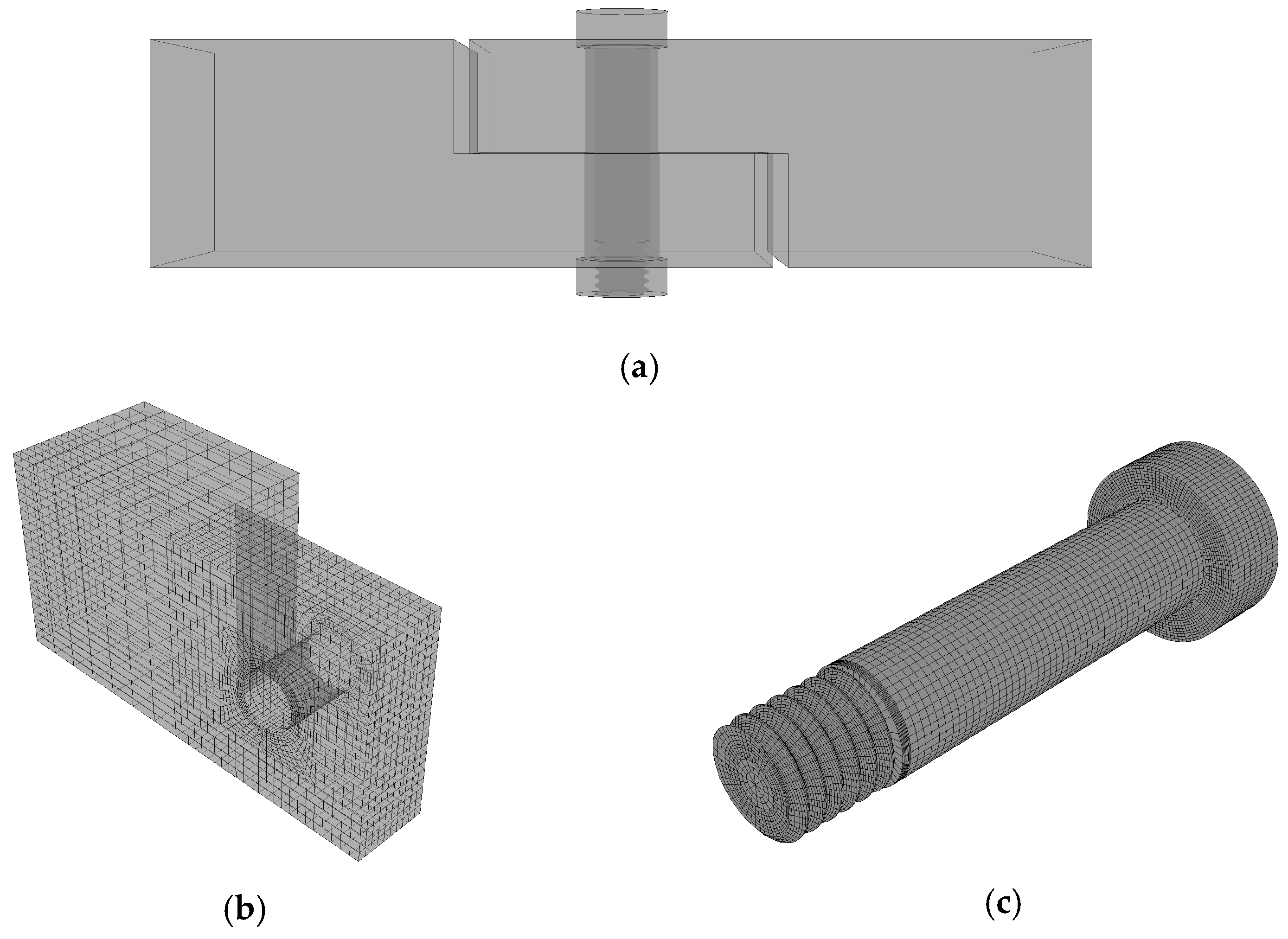

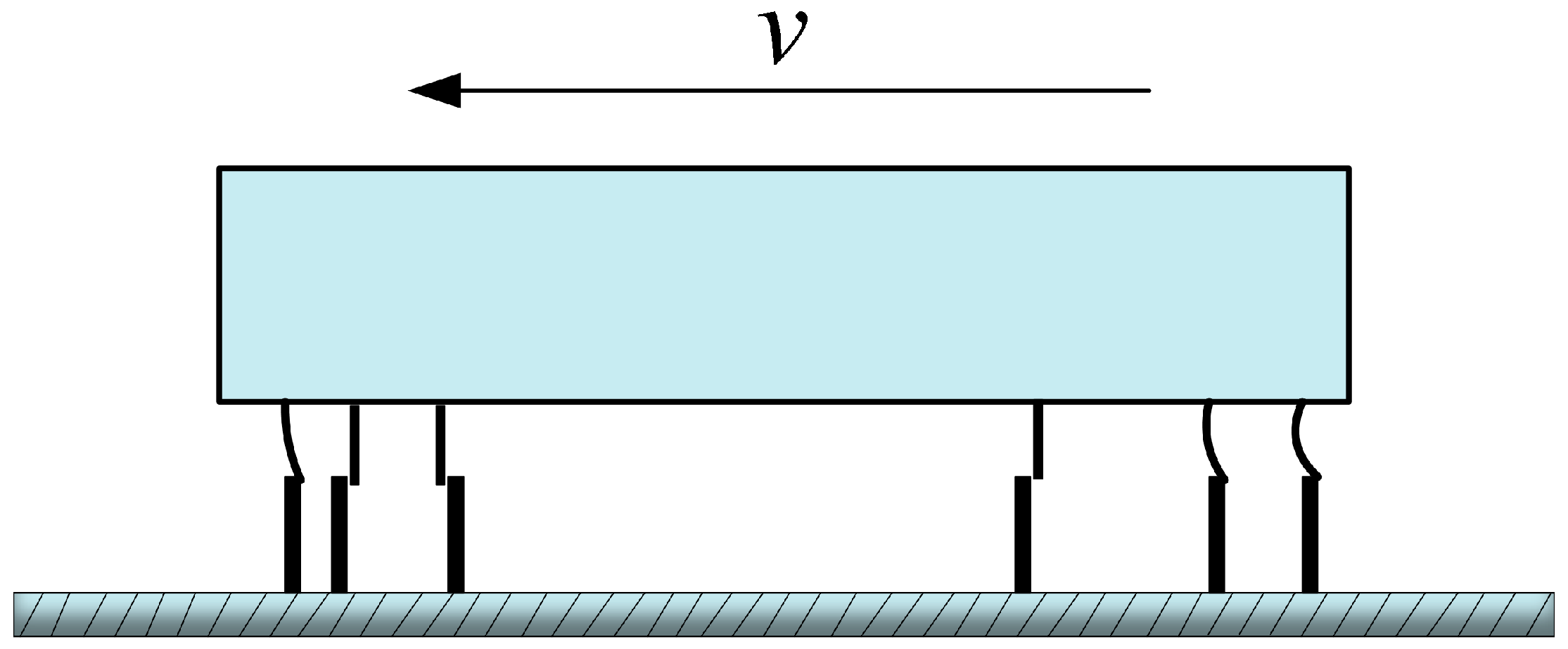
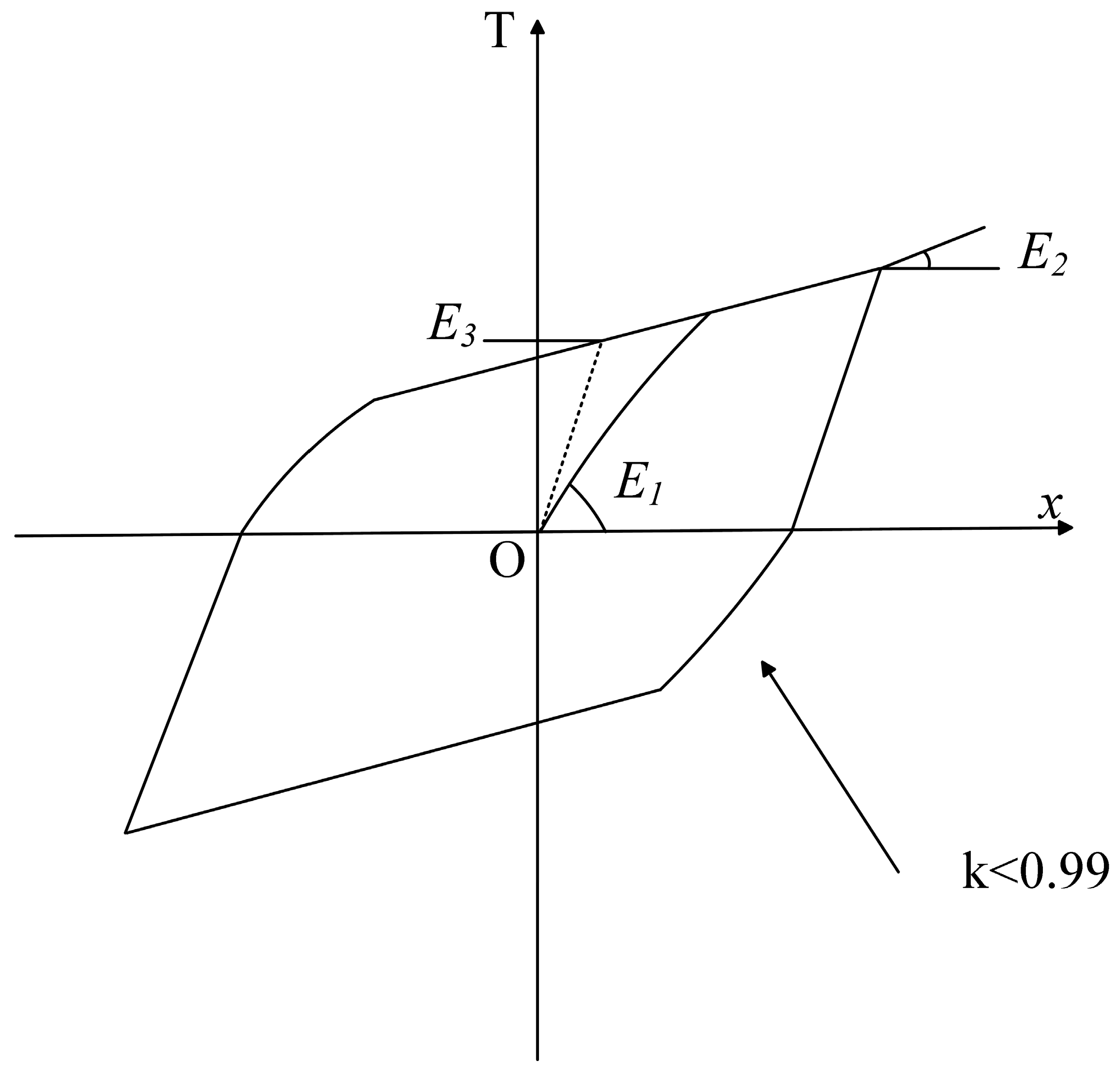

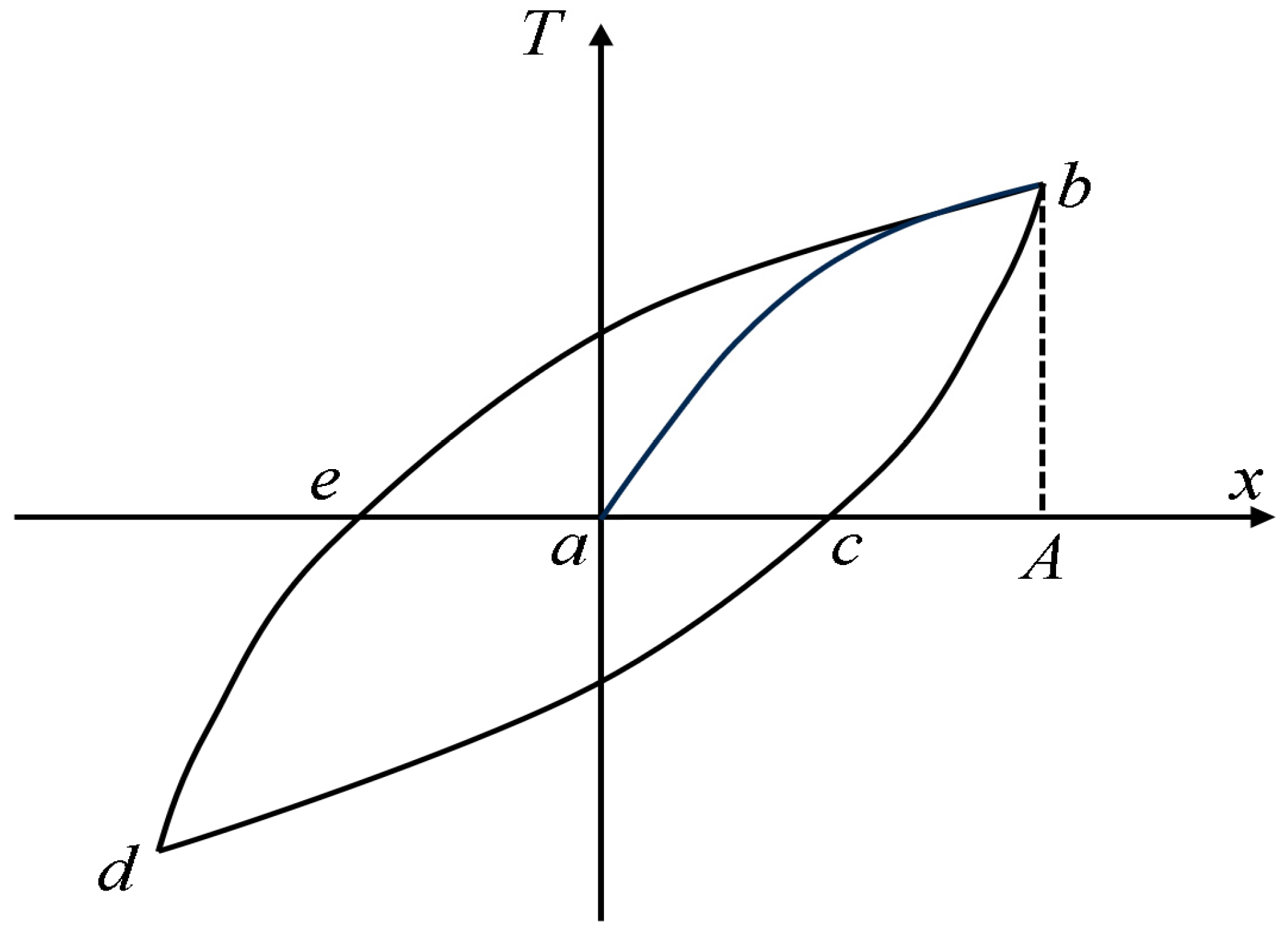
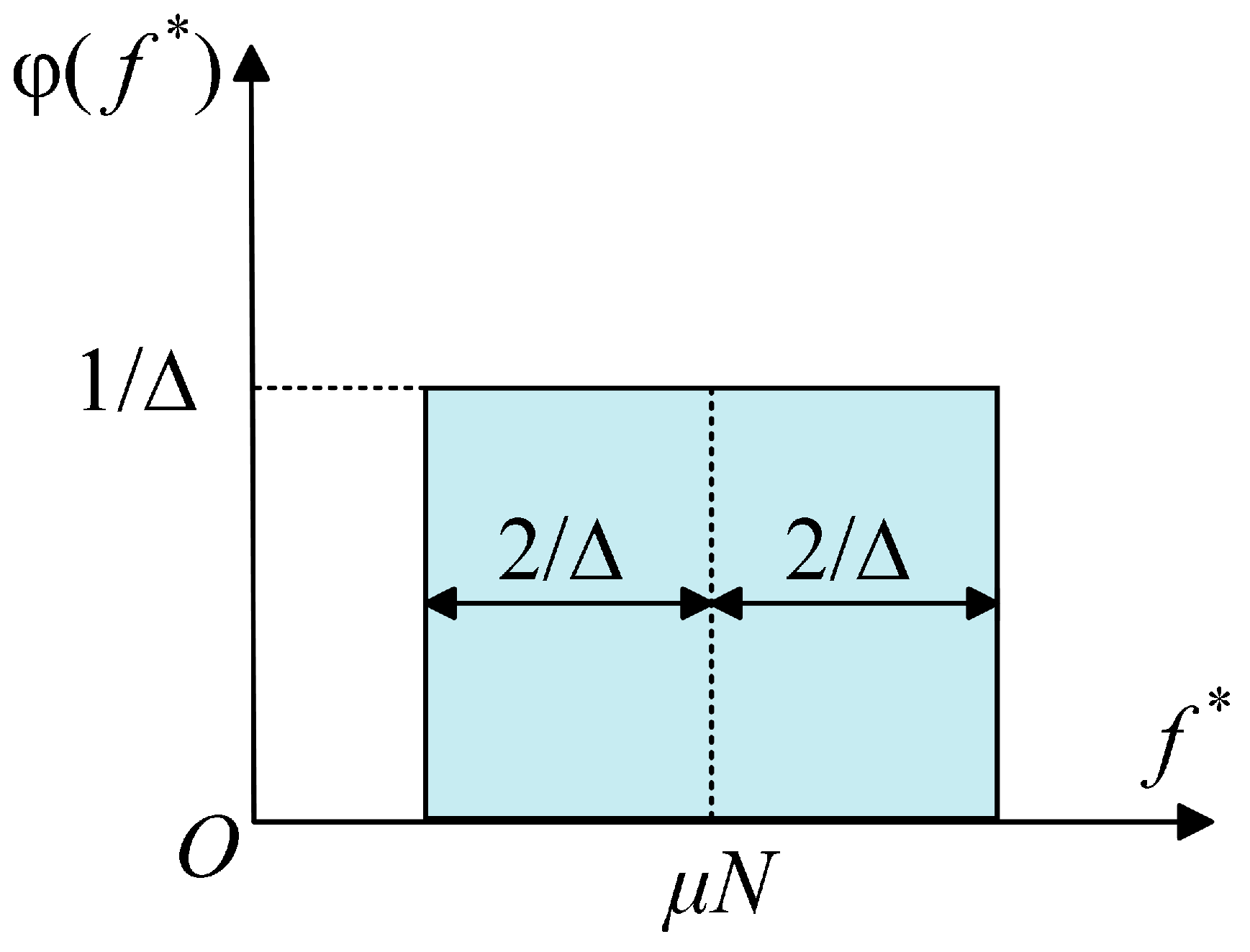
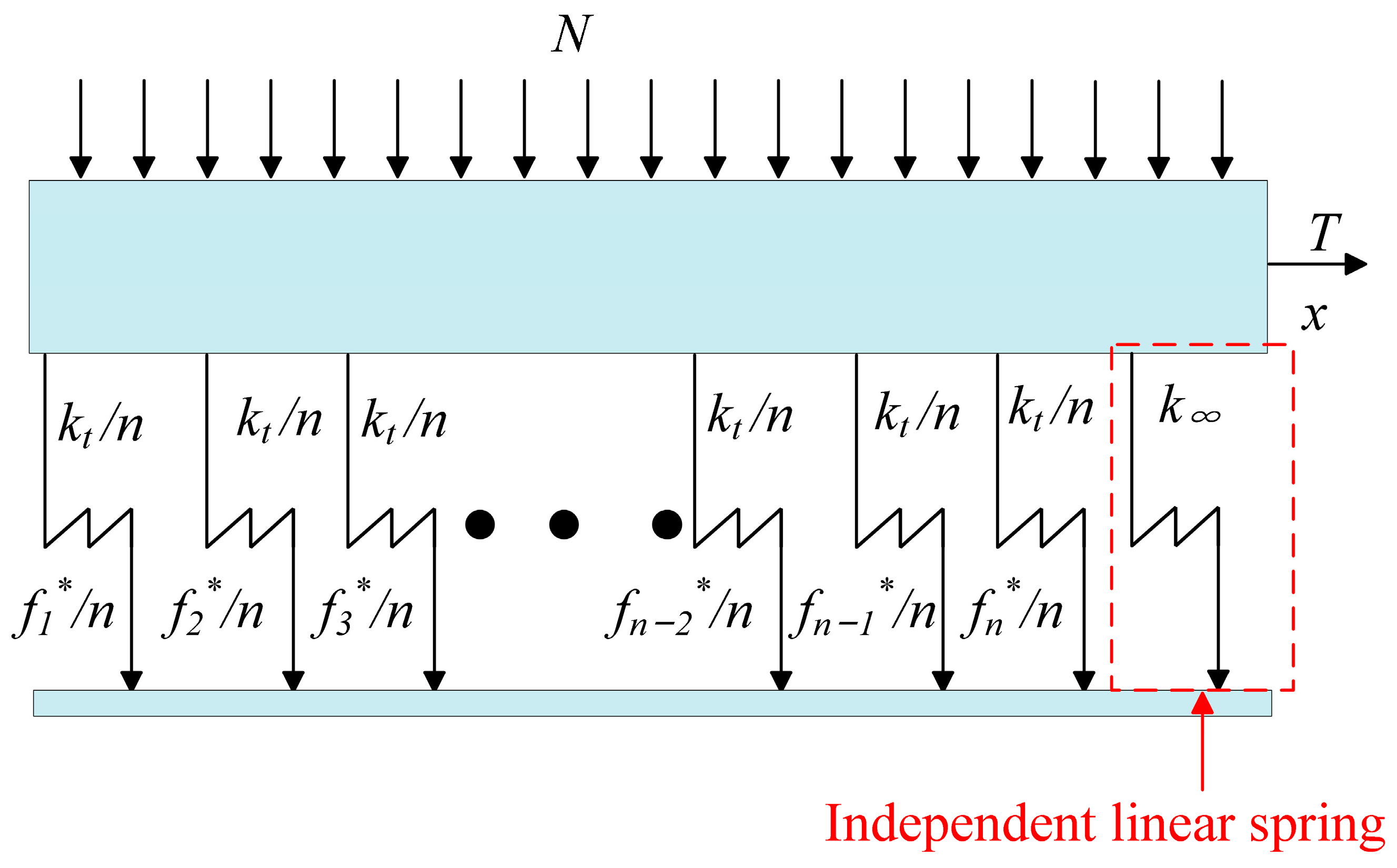


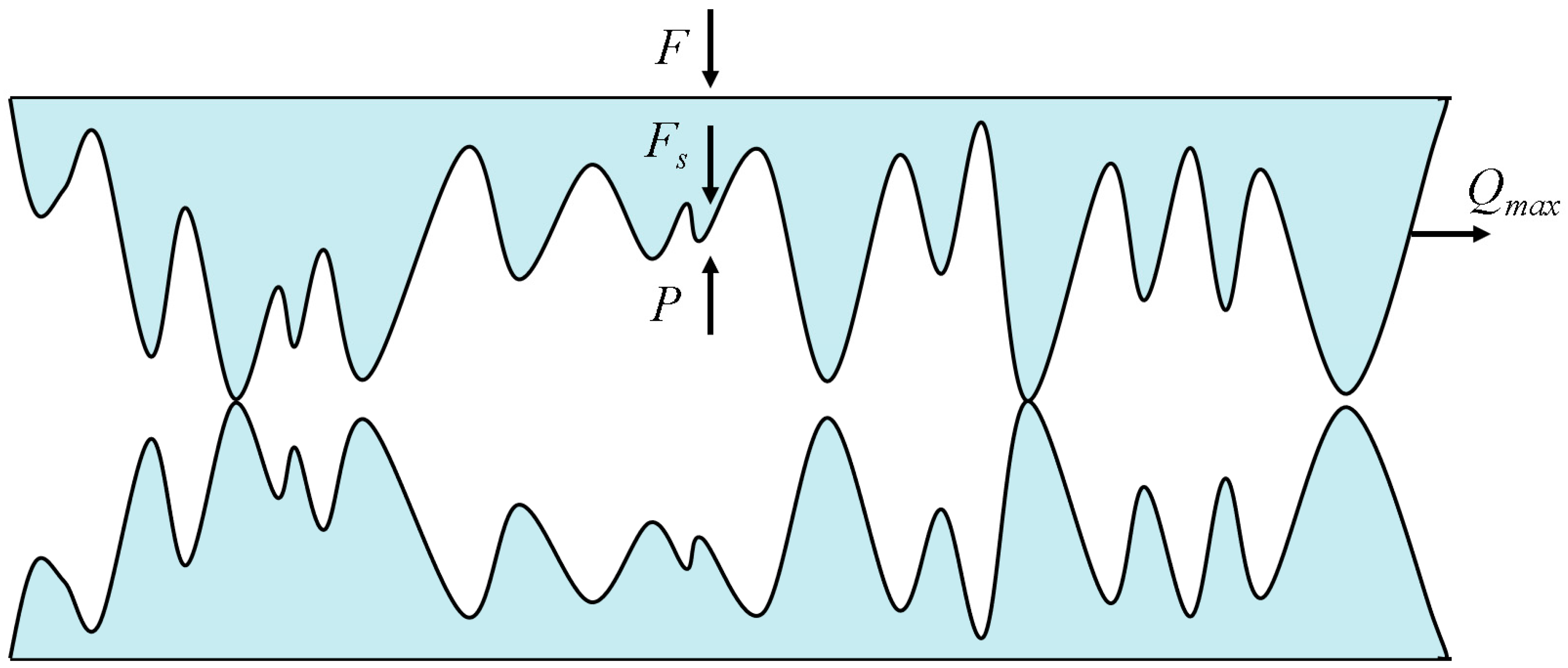

Disclaimer/Publisher’s Note: The statements, opinions and data contained in all publications are solely those of the individual author(s) and contributor(s) and not of MDPI and/or the editor(s). MDPI and/or the editor(s) disclaim responsibility for any injury to people or property resulting from any ideas, methods, instructions or products referred to in the content. |
© 2024 by the authors. Licensee MDPI, Basel, Switzerland. This article is an open access article distributed under the terms and conditions of the Creative Commons Attribution (CC BY) license (https://creativecommons.org/licenses/by/4.0/).
Share and Cite
Lu, X.; Zhu, M.; Wang, S.; Li, S.; Xu, Z.; Liu, Y. Progress in Theoretical Modelling of Macroscopic and Microscopic Dynamics of Bolted Joints in Complex Equipment. Lubricants 2024, 12, 182. https://doi.org/10.3390/lubricants12050182
Lu X, Zhu M, Wang S, Li S, Xu Z, Liu Y. Progress in Theoretical Modelling of Macroscopic and Microscopic Dynamics of Bolted Joints in Complex Equipment. Lubricants. 2024; 12(5):182. https://doi.org/10.3390/lubricants12050182
Chicago/Turabian StyleLu, Xiaohan, Min Zhu, Shengao Wang, Shengnan Li, Zijian Xu, and Yilong Liu. 2024. "Progress in Theoretical Modelling of Macroscopic and Microscopic Dynamics of Bolted Joints in Complex Equipment" Lubricants 12, no. 5: 182. https://doi.org/10.3390/lubricants12050182



